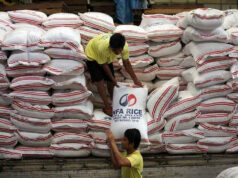THE Department of Agriculture (DA) has imposed a temporary ban on poultry imports from parts of Ireland after Dublin reported outbreaks of the H5N8 highly pathogenic avian influenza (bird flu).
In a memorandum order signed on Jan. 15, Agriculture Secretary William D. Dar suspended the entry of domestic and wild birds and their products such as poultry meat, day old chicks, eggs, and semen from Knockananna in County Wicklow, Ireland.
The ban also freezes the processing, evaluation, and issuance of sanitary and phytosanitary import clearances for these commodities.
Mr. Dar said the government of Ireland reported on Dec. 12 last year confirmed H5N8 outbreaks in County Wicklow.
In a separate memorandum order, the DA lifted the ban on poultry imports from Chesterfield County in the US state of South Carolina.
Mr. Dar said Chesterfield County has confirmed that it is free from bird flu.
He added that according to the evaluation of the Bureau of Animal Industry (BAI), the risk of contamination from imported poultry products is negligible.
The DA issued the ban on the South Carolina imports in a memorandum circular in April 2020, after the US Department of Agriculture confirmed an H7N3 outbreak in Chesterfield County turkeys.
The BAI estimates that US chicken imports amounted to 99.82 million kilograms in 2020, equivalent to 24.8% of the Philippines’ total chicken imports, reckoned at about 402.70 million kilograms.
US duck imports in 2020 totaled 41,280 kilograms and accounted for 42.4% of total imports of 97,421 kilograms. The BAI data did not have an estimate for poultry imports from Ireland.
Separately, the Meat Importers and Traders Association (MITA) recommended that the 5% tariff rates on the chicken mechanically deboned meat (MDM) imports be incorporated into the ongoing tariff review to prolong its effectivity to five years, instead of two years.
“Unfortunately, this only means that next year, the affected industries will need to re-engage one another including government on its extension, expending valuable resources and energy unnecessarily,” Jesus C. Cham, the organization’s president, said in a letter to the National Economic and Development Authority (NEDA) on Wednesday.
On Jan. 15, President Rodrigo R. Duterte signed Executive Order (EO) No. 123 that retained the tariff rate on MDM to 5% until the end of 2022. Earlier, EO 82 had reduced the tariff rate from 40%, which expired on Dec. 31.
Mr. Cham recommended the implementation of lower tariffs on pork imports such as In Quota Pork, from 30% to 10%, and Out Quota Pork, from 40% to 20%.
“The expansion of the pork Minimum Access Volume (MAV) merely increases access to supply but does not impact the price or landed cost. The reduction of pork duty by a nominal 10% will translate into a reduction in landed cost of P15 per kilogram,” Mr. Cham said.
The DA said it plans to triple the annual MAV to 150,000 metric tons (MT) from the current 54,000 MT to address the low supply and high retail prices of pork. Imports under MAV are charged a 30% tariff while those outside MAV are assessed at 40%.
DA spokesman Noel O. Reyes said in response to a request for comment that MITA’s recommendation has to be evaluated by the DA, NEDA, Committee on Tariff and Related Matters, and the Trade department.
“One factor to consider is the stand of poultry raisers’ groups since they complain that the tariff system is used as a means of ‘technical smuggling,’ such as the misdeclaration of containers where choice cuts are mixed with MDM,” Mr. Reyes said in a mobile phone message. — Revin Mikhael D. Ochave



